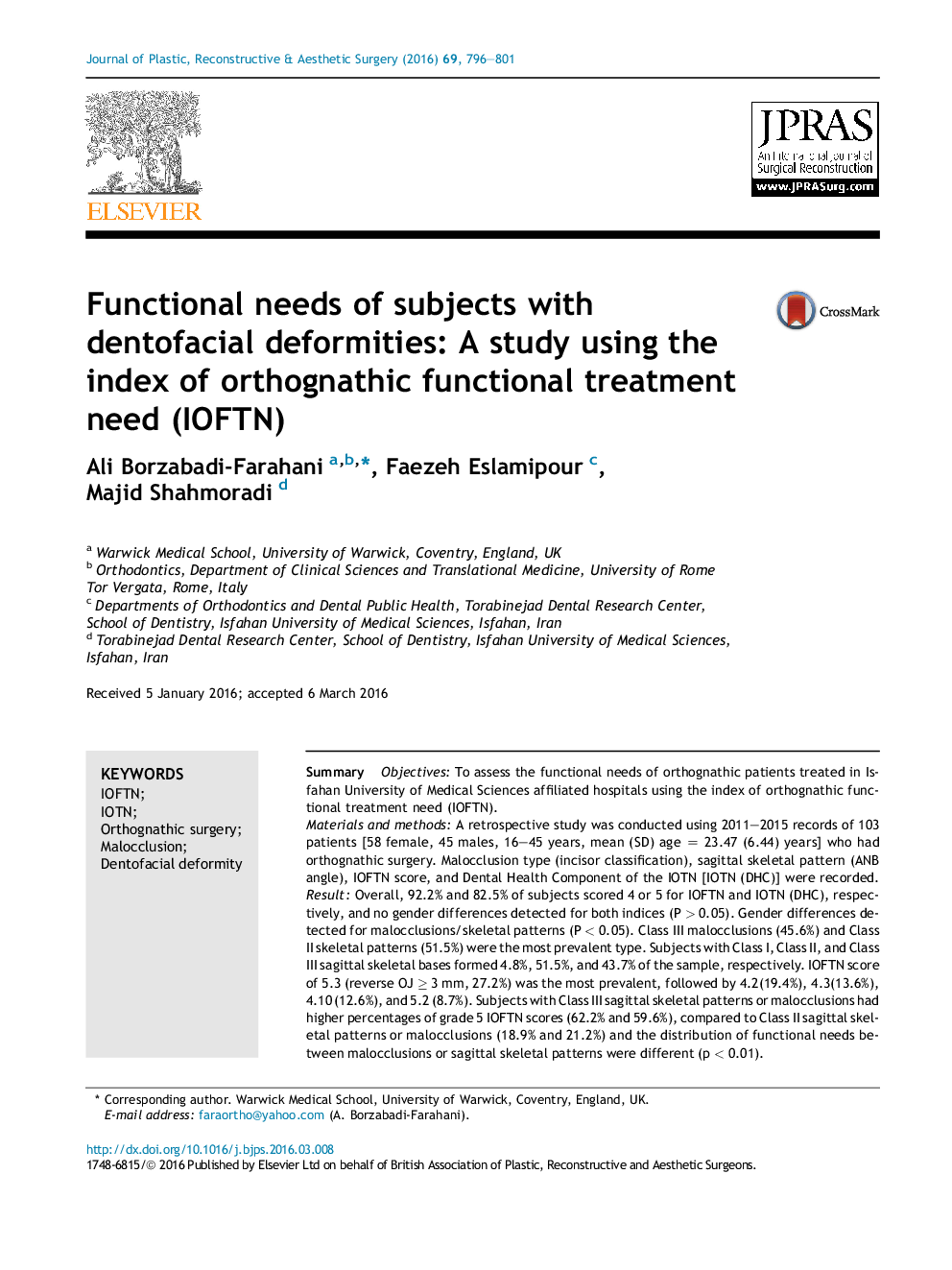| Article ID | Journal | Published Year | Pages | File Type |
|---|---|---|---|---|
| 4117219 | Journal of Plastic, Reconstructive & Aesthetic Surgery | 2016 | 6 Pages |
SummaryObjectivesTo assess the functional needs of orthognathic patients treated in Isfahan University of Medical Sciences affiliated hospitals using the index of orthognathic functional treatment need (IOFTN).Materials and methodsA retrospective study was conducted using 2011–2015 records of 103 patients [58 female, 45 males, 16–45 years, mean (SD) age = 23.47 (6.44) years] who had orthognathic surgery. Malocclusion type (incisor classification), sagittal skeletal pattern (ANB angle), IOFTN score, and Dental Health Component of the IOTN [IOTN (DHC)] were recorded.ResultOverall, 92.2% and 82.5% of subjects scored 4 or 5 for IOFTN and IOTN (DHC), respectively, and no gender differences detected for both indices (P > 0.05). Gender differences detected for malocclusions/skeletal patterns (P < 0.05). Class III malocclusions (45.6%) and Class II skeletal patterns (51.5%) were the most prevalent type. Subjects with Class I, Class II, and Class III sagittal skeletal bases formed 4.8%, 51.5%, and 43.7% of the sample, respectively. IOFTN score of 5.3 (reverse OJ ≥ 3 mm, 27.2%) was the most prevalent, followed by 4.2(19.4%), 4.3(13.6%), 4.10 (12.6%), and 5.2 (8.7%). Subjects with Class III sagittal skeletal patterns or malocclusions had higher percentages of grade 5 IOFTN scores (62.2% and 59.6%), compared to Class II sagittal skeletal patterns or malocclusions (18.9% and 21.2%) and the distribution of functional needs between malocclusions or sagittal skeletal patterns were different (p < 0.01).ConclusionIOFTN identified 92.2% of orthognathic surgery patients as having great and very great functional needs and appeared to be reliable tool to identify patients in need of orthognathic surgery. Higher percentages of Class III subjects scored grade 5 of IOFTN, indicating higher functional need for orthognathic surgery in this group.
